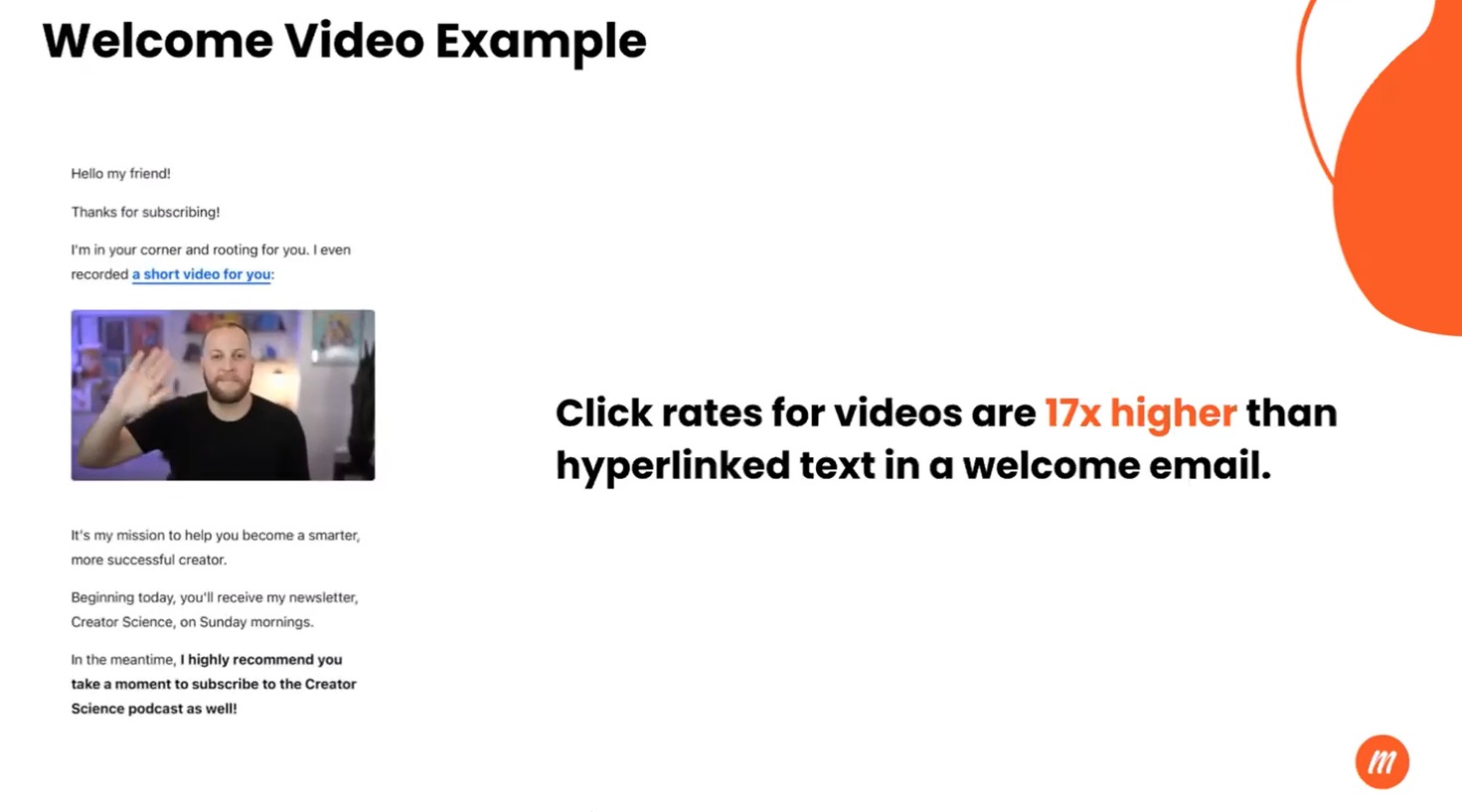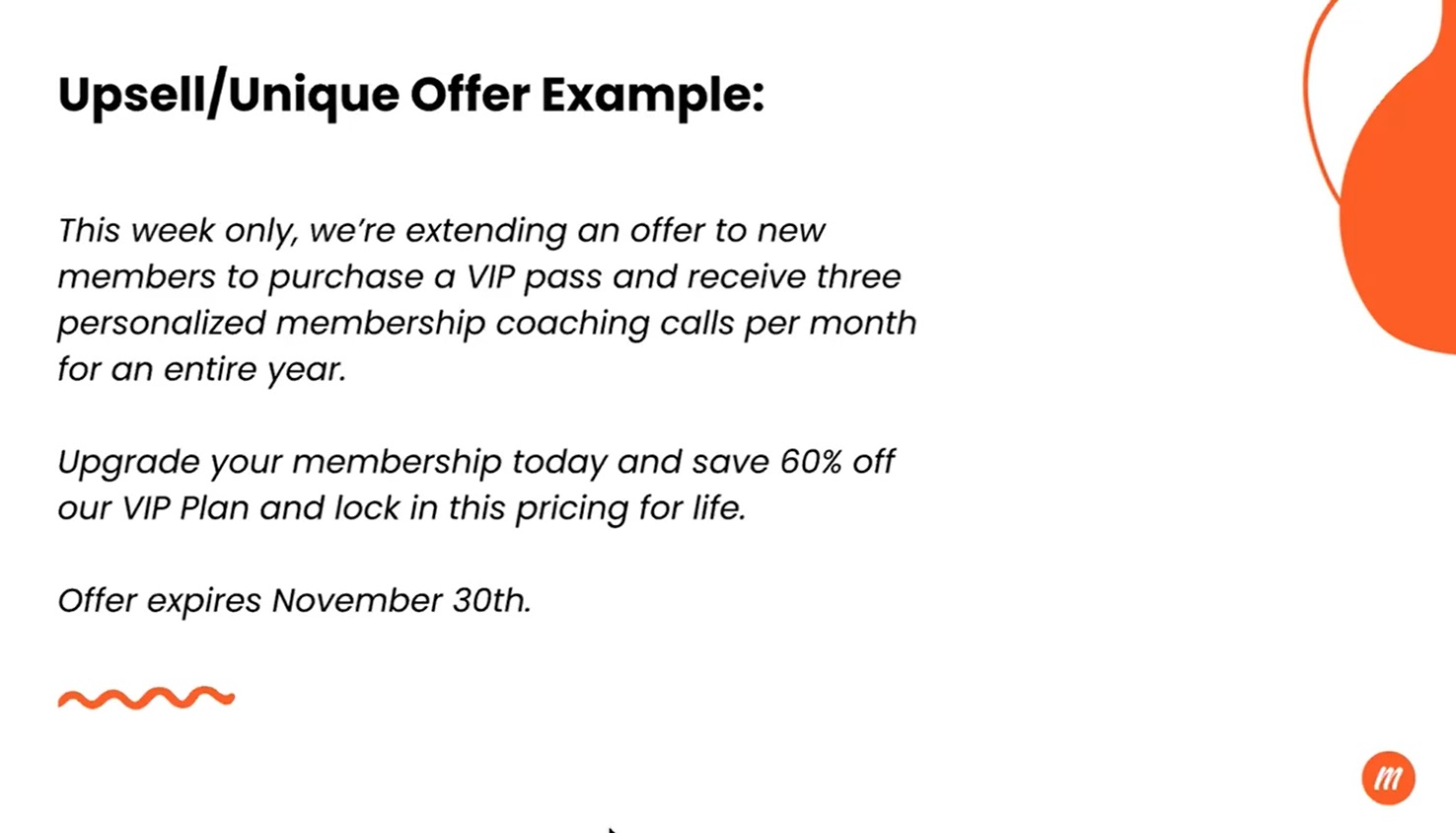Onboarding: How to welcome new members into your community

It’s common to discuss acquisition as a crucial part of any business strategy. But Michael Gillespie, who leads Customer Success here at Memberful, has noticed there’s a critically overlooked element of membership business, which happens just after the acquisition: onboarding.
“A lot of folks focus on the sale of the membership, but once the sale happens, that's when the hard part begins!” says Michael. Those first interactions with a new customer are more crucial in membership because it requires an element of human interaction you might not see in other industries.
What does it mean to onboard someone successfully? “Onboarding may be specific to your membership. It may be something that drives a particular action, such as a welcome email – and some people may just stop there,” Michael explains. But he believes onboarding is meant to set expectation: it lets a member know what they gain from joining your community – not just immediately but in the following months.
“Onboarding is typically delivered as a passive experience that fails to create a roadmap for members,” Michael adds. It’s better to assume that, at the initial touchpoint with your community, your member knows nothing about what to do. A lack of information creates barriers that prevent new members from engaging with your membership in the way you want.
Typical onboarding sequences
“In an average membership, I sign someone up, I send that person a welcome email, they receive three to five links to content I want them to engage with, and I'm done,” Michael says. “Members feel overwhelmed or underserved.”
Members who don't receive an onboarding roadmap will rarely engage and often churn. On the other hand, members who know what actions to take remain invested. “It’s important to create a level of intent among new members,” Michael says. “Tell them where you are taking them on the membership journey.”
“If you're a podcaster, do you want someone to engage with a specific podcast? Do you want them to engage with another form of content? If you're not explaining to members where you're taking them, and more importantly why you're taking them, they're going to be making their way through the membership with zero intent,” he explains.
 If you're a podcaster, your onboarding might encourage people to engage with a specific episode
If you're a podcaster, your onboarding might encourage people to engage with a specific episode
This is the single event that drives the majority of churn in the early stages of membership. “You've got a window of opportunity of 24 hours. Is there an action you want your member to take? Work out what you need out of onboarding and how you engineer a process so that you provide the right experience for each member,” he adds.
Removing barriers for the ideal onboarding experience
When building your onboarding process, the key consideration is the intended output. “Do you want a member to upgrade to a tier with more benefits? Or maybe you have onboarded a monthly member, and your desire is to convert them to a yearly member?” Michael asks.
This output could also be to complete a course or read a specific article. “Most folks, when it comes to onboarding, have not laid out intended outputs,” he adds. “Make a list of between one and three intended outputs. Ask yourself, ‘What are the barriers that may exist to realizing those outputs?’ – there are always barriers to people engaging with your membership.”
Barriers could include time, price, competition, or a combination of all three. “Folks only have a limited amount of time. We're busy people; we have countless distractions,” Michael explains. “Is there a price barrier when it comes to upgrades? Or, if there's a similar product in the marketplace, what makes that member stick with your membership over another?”
Even knowledge could be a barrier. “Members are often not educated on ‘where they need to be’ in the membership. What is the goal? Where do they want to be after a year?” Michael asks. “The quicker members understand the upside, the quicker they'll buy into the process and drive the output you want.” Early engagement will help: one onboarding output could be to ask members to respond to a welcome email, with information such as any challenges they're facing.
 Members are often not educated on ‘where they need to be’ in the membership
Members are often not educated on ‘where they need to be’ in the membership
Be transparent: tell members what you want from the onboarding process – and what benefits they will see if they take action. “Don't feel bad about letting your members know what your intent is. The members who have a high awareness of your intent will take action when you need them to. These members are going to stay around for the longest amount of time,” Michael smiles.
Welcome videos
Welcome emails are simple and effective onboarding tools; most new members will expect an email immediately after signing up. But at Memberful we think you can go one better: “You have a small window of opportunity to really wow that member,” says Michael. “Memberships that include a welcome video in their onboarding have a 50% reduced churn rate during the first two months of membership.”
A welcome video humanizes your membership. “One of the biggest opportunities right now in membership is human interaction,” says Michael. “Automation and AI-generated content are great but membership has a more personal side to it. If there is a gap in what consumers feel they're missing today within membership products, it's human interaction.”
Jay Klaus from Creator Science has a great onboarding video: “In his welcome email, he puts a video and he welcomes you. He tells you why he's doing what he's doing, and he lays out what you can expect over the next six months,” Michael explains.
 Jay Klaus from Creator Science has a great onboarding video
Jay Klaus from Creator Science has a great onboarding video
This is a great way to ignite engagement during the early stages of onboarding. For video, the click rate inside an email on video content is 17 times higher on average than hyperlink texts. “Put front and center whatever your intent is, and humanize what it is you're doing for your audience. Build it once, deliver it a million times,” he adds.
Roadmaps
An onboarding email needs to include a roadmap. Set expectation: where do members access benefits? Is there a cadence for those benefits, perhaps weekly? Where do they find those benefits – do they need to open their email inbox? Do they need to log in?
“This is an easily overlooked part of membership, but letting your member know precisely what you're delivering is essential in capping churn rates within the first two months,” Michael explains. “Members shouldn't be left to figure anything out on their own.”
We've seen plenty of examples recently. “The onboarding email includes links to lots of great content, but members get lost. When that happens, you end up with a member who's not engaged, or you end up with a member who's confused and doesn't want to make the effort to go to your website to learn more,” he continues.
 An onboarding email needs to include a roadmap
An onboarding email needs to include a roadmap
You cannot put too much information in front of a member when it comes to a roadmap. It's easy to assume members know how to consume your content but it's safer to think a member knows nothing. “Explicitly lay out everything for your members, and you’ll see a lower churn rate,” Michael adds.
Upsells
Most people don't think about upselling immediately after signing up a new member. But upselling when done right is a highly impactful part of onboarding and you can lock in significantly higher revenue.
Michael has observed that new members are most likely to respond to upsells within the first 24 hours to one week after they've purchased a membership. “It's easier to convert a member within the first few days because they have all the required context around the membership. They're already ‘one foot in’,” he explains.
Upsell offers within onboarding have a different positioning than those on your website. Typically these offers don't even appear on your site – they are reserved for onboarding. “Once someone is in your membership, they feel a part of something. Upsells are a great way to give them an enhanced experience through additional benefits,” he says.
“Let's say you have a paid newsletter that's $6 per month, and you give someone the opportunity to upgrade to a yearly option that gets them lots more value, but at an incrementally smaller price on a monthly basis. Members that are educated enough during onboarding are more likely to purchase an upsell on a yearly membership. We typically see conversion rates of 30 to 40% for these offers,” Michael reports.
Furthermore, these members get an entire year of time to consume your content. For members who take advantage of these types of offers, the lifetime value of those members is between four and five times higher than a member who didn't respond to the upsell.
 Upselling when done right is a highly impactful part of onboarding
Upselling when done right is a highly impactful part of onboarding
“Think about deepening your membership experience. It could be with additional benefits that you can create an exclusive plan for,” Michael adds. “Every membership has a segment of members who are highly engaged, and those members are the most likely to convert on an upsell in the early days. But you have to put the offer in front of them.”
The text in your welcome email could say something like: ‘This week only, we're extending an offer to new members to purchase a VIP pass. You'll receive three personalized membership coaching calls per month for an entire year.’ There are two aspects to the offer: it's limited, with a clear date of when it expires; and it includes a significant saving.
Upsells reduce the probability of near-term churn. “Members who lock in, for example, 60% savings off a yearly membership within the first week of membership are 80% more likely to be a member two years from now,” Michael reports. “The upsell only has to be incrementally higher in price. But statistically those members who convert will be long-term members, and that means more revenue for your business.”
The conversion rates of upsells in the onboarding series are seven to 10 times higher than for first-time purchases. “If you have a 3% conversion rate on your regular membership, once you get these folks into the membership, you can expect a 30% conversion rate,” Michael explains. With upsells during onboarding, members will generate five times more revenue for your membership on average than someone who does not convert on the upsell.
Pricing and conclusion
From a pricing standpoint, we would recommend not to exceed 50% when it comes to the incremental difference.
“For example, I'm a yearly member. I've signed up for $50 a year. I'm presented with an upsell offer that includes access to four or five different things for $75 a year. That's a 50% jump but that's 50% more revenue you've already gained from that customer in the first year,” Michael explains. Over the next few years of membership, that member is going to generate five to seven times more revenue.
“Think about what you can tack on to existing benefits to create a deeper experience. Upsells that convert well will generate amazing amounts of revenue that are otherwise money left on the table. There are always members in your membership that have a desire for deeper experiences,” Michael concludes.
The great part about upsells is that it allows you to immediately find those folks at the opportune time and extract that value. You'll get to maintain that value over the coming months and years if that member does choose to convert.
We hope this helps you with your onboarding strategies. Feel free to reach out on social media if you have any questions. Good luck!
Subscribe for updates
Stay up to date on Memberful's latest product updates, insights, and teaching centered around growing your community.
Have an audience?
Customers like Mythical (28+ million subscribers) rely on Memberful to power their membership communities.
Get started for free